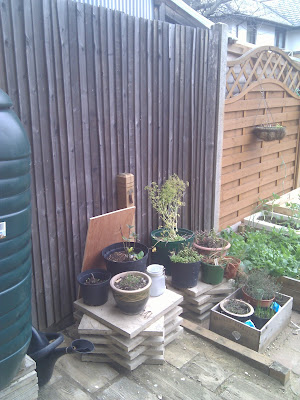Garlic and snails
Aug. 10th, 2013 10:58 amMirrored from Twisting Vines.
Busy times over here, with Leon starting to walk and lots of summer fun stuff happening.
I’ve harvested my garlic, and for the first time ever got a really decent crop (14 bulbs) which look like they’ll be very usable. Unfortunately I left it a week too late and the stalks are too dry to be plaited and hung to dry, so the bulbs are drying on a plate in the kitchen and being turned occasionally. I planted these garlics from a bulb (sold for eating) from the Co-op rather than buying proper seed garlic and they’re my best ever, and I’m not quite sure what to think! I’m debating whether I should save a bulb for next year (usually discouraged I think if you’ve planted supermarket seed?), buy another Co-op bulb next year, or buy a ‘proper’ one.
Depressingly, though, my grape vine has died altogether. It got heavily munched by snails/slugs, but when I wrote to the nursery they thought it would recover. Sadly not. I am probably going to try again next year, but in the meantime I need a plan of action for dealing with the slimey beasties.
I’ve also started work on my Permaculture Diploma, which is exciting. I’m using the Back Garden Project as one of my designs, so have been pulling posts together from that and writing up my analysis more formally. Other projects on the horizon include a mini greenhouse for the back garden, a plan for the balcony and the front porch, and very excitingly, a plan for my friends’ new allotment.
I’ve also been writing about mastitis with an older baby over at Natural Parents Network, for World Breastfeeding Week.

